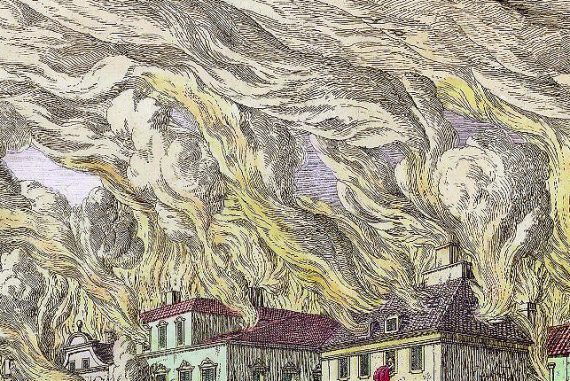
On the weekend of Oct. 13, the City of Kingston – 20 minutes north of New Paltz – relaunched its Burning of Kingston Festival, commemorating the former capital of New York during the Revolutionary War. The schedule of events from Friday to Sunday were organized by Kingston and Ulster County staff.
Taylor Bruck, Kingston historian and deputy county clerk, spearheaded the initiative to bring back the celebration after it took a pause during the pandemic. This year was his first time being a part of the festival, though the municipal historian typically isn’t the one leading the efforts. “I just happen to know the right folks and be involved professionally with a lot of the locations of the burning, so it just makes sense for me to kind of take it on,” said Bruck.
The city was burned by the British in October of 1777 during the Revolutionary War, not only because it was the state capital, because it was staunchly revolutionary. British General John Vaughan, who ordered the burning, labeled Kingston a “nursery for almost every villain in the country.” So, the festival has come to embody that pride and the recognition of the city’s history. As Bruck puts it, it’s a “teaching tool to remind people what Kingston used to be, but also sort of a celebration of the resilience of the inhabitants to return and rebuild the city.”
One of the popular events on Saturday was a reenactment of a street battle during the war. The Redcoats fought the Colonial Militia through uptown Kingston, making advances on them until finally capturing Mayor Steve Noble at the historic Four Corners. A large crowd followed the battle down the streets to catch a sight of the muskets firing from the front lines. Though no such battle actually took place in Kingston during the war, Bruck wants to continue the reenactment because it draws a large audience and can act as a good segue, especially for kids, to get into the real history.
The festival had been held biannually since the early 90s and had grown a lot before stopping during the pandemic. This year featured a full schedule of lectures, music, readings and more with a greater focus on the untold stories of the marginalized people of the period. Bruck, along with the other organizers, wanted to tell the narratives of the Indigenous population, the enslaved population and women during the burning, which have often been overlooked in the past. “We were excited to be able to use the event as an opportunity to teach people about all of these underrepresented folks.” These stories had not been part of the festival prior to the pandemic but were featured this year during events on Friday and Saturday. The Matthewis Persen House Museum on John Street, which was open during the reenactment, also has exhibits on display about the history of African Americans in the region.
The City of Kingston plans to have the festival annually, gearing up for the 250th anniversary of the burning in 2027. With all the changes and excitement this year, Bruck just wants to keep the momentum rolling. “The burning is back and better than ever.”
